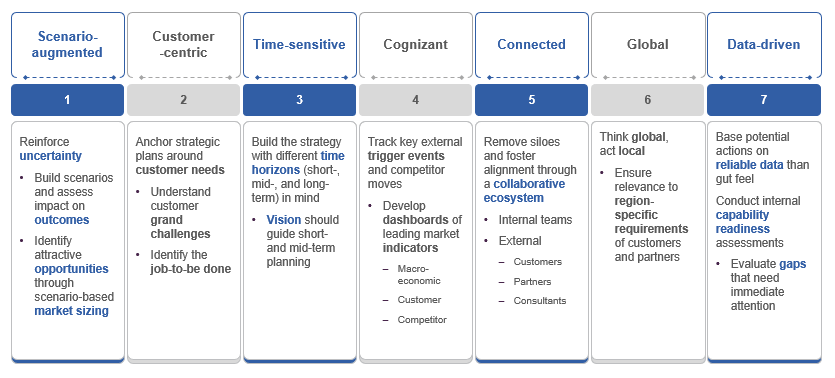Highly uncertain market dynamics warrant the need to recalibrate topline strategy.
In Covid-hit world, strategy leaders are trying to navigate through business uncertainties. These uncertainties have touched every aspect of the business landscape ranging from internal factors such as project delays to external factors such as supply chain, customers, and competition. It is becoming increasingly critical for them to proactively observe market changes and develop scenario-based business plans.
While leaders focus on using reactive short-term measures to tackle this phase of uncertainty, the need to recalibrate strategy, from mid- to long-term, is stronger than ever.
Strategy leaders are preparing to minimize the impact of Covid-19’s economic downturn and build a sustainable growth engine. They are looking for ways to translate uncertainties into plausible scenarios and build business plans with a strong hypothesis anchored around industry dynamics and customer needs.
As strategy teams evaluate new avenues of growth, their go-forward plans should be based on holistic evaluation of available strategic options. The three keys lenses of evaluating strategic options are:
- Market attractiveness: Develop scenario-augmented market estimation and growth projection models
- Readiness: Assess internal technology and go-to-market readiness
- Risks: Build foresight that considers the impact of internal and external uncertainties
Although, there is no one-size-fits-all approach, we have found 7 guiding principles that should form the core of strategy development.
Evalueserve’s closed-loop strategy framework helps leaders ask the right questions and make clear choices to emerge stronger in uncertain times.
Read a detailed analysis on how you can recalibrate your topline strategy. Download the guide by clicking the link below.
Download the full perspective here




